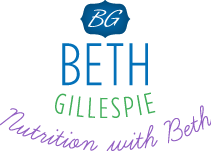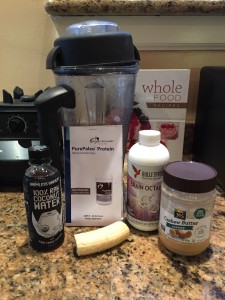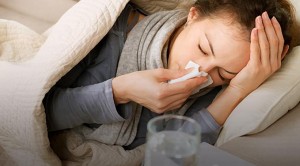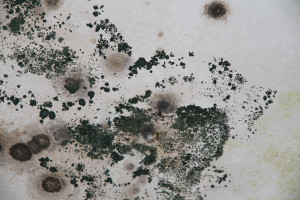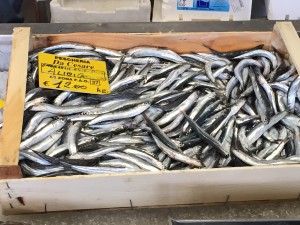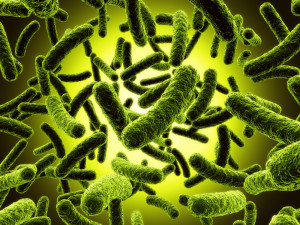What is it going to take to get industry to remove harmful chemicals from products that we buy and agriculture to stop spraying detrimental pesticides on our produce? How much scientific evidence is enough??
According to the Executive Summary of the Endocrine Society’s 2nd Scientific Statement on Endocrine Disruptor Chemicals (EDCs), we have enough evidence that certain chemicals and pesticides interact with our endocrine and neuroendocrine systems…and not in a positive way!
What exactly is an EDC? An endocrine disruptor chemical is an external chemical or mix of chemicals that interferes with any aspect of hormone action. Your endocrine system is your body’s interface to the environment, and thus is very susceptible to EDCs. The developing fetus is especially vulnerable. Unfortunately, mixtures of very low dose EDCs can affect your endocrine system. So it is not just a situation of high exposure to one chemical. The EDCs that have the strongest association with endocrine related diseases are BPA, phthalates, POPs (persistent organic pollutants), and pesticides. ** See below to find out where these chemicals are found in your living environment.
So why is this important to you?
Thinking about starting a family? Or having trouble conceiving?
Has your physician asked you about environmental exposure to chemicals?
EDCs (especially BPA, POPs, and pesticides) affect female reproductive health. In my last blog, I wrote about why it is so important to cleanse before you try to get pregnant. Pre-pregnancy cleanse. According to the Executive Summary, EDCs impact ovarian development, structure, and function, leading to abnormal ovulation and and fertility in animals. Some EDCs adversely affect the uterus and vagina in both animals and humans. Disorders in women that are associated with EDCs include PCOS, fibroids, endometriosis, preterm birth, and adverse birth outcomes. And in humans, epidemiological data support association between higher exposure to EDCs during development with decreased IQ and increased neurodevelopmental problems.
And men are not exempt! EDCs act as anti-androgens, (i.e. anti-testosterone) and also as xenoestrogens in men. Low testosterone and higher estrogen in a male is not good for fertility, as well as libido! Animal studies demonstrate clearly that EDCs disrupt the development of the male reproductive tract. And according to the review, semen quality in men is on the decline globally.
Having trouble with your thyroid gland? I have worked with a lot of clients with thyroid issues. Thyroid disruptors include PCBs, other POPS, phthalates, perchlorate, and BPA. Environmental chemicals need to be considered. And if you are pregnant or thinking about getting pregnant, be in the know that epidemiological data show cognitive deficits in children exposed to thyroid disruptors prenatally.
Have you tried just about everything and are still unable to lose weight?
The Scientific Review also placed emphasis on all the new emerging research on EDCs and obesity, Type II Diabetes, and cardiovascular disease. Interestingly, in animal studies, developmental exposures to EDCs disrupt energy balance leading to obesity. So the impact of EDCs on the fetus is predisposing an animal to obesity before it is even born! EDCs also alter insulin action leading to Type II Diabetes in animal studies. And there is increasing human evidence that EDCs are associated with obesity, Type II Diabetes, and CVD. In my RENEW class, we go into more detail how these EDCs affect your metabolism and even the size of your fat cells!
You may be more familiar with EDCs and their association with hormone related cancers such as breast cancer, ovarian cancer, and endometrial cancer. However, certain classes of EDCs, such as pesticides, Agent Orange, PCBs, and BPA are now being associated with prostate cancer. If you have family history of any of these cancers, please consider the impact of EDCs and talk to your health care practitioner.
What can we do? Education is the first step. Please share this article with your family, friends, and colleagues. The more we are educated on this topic, the greater our voice to influence industry and environmental policy. And please join my RENEW class in January where you learn to reduce your exposure to common environmental toxins and eat foods/take nutrients that help you get these chemicals out of your body so that you can get your health back! RENEW Class Details
**BPA is used primarily to make plastics, and is largely found in plastic baby and water bottles, sports equipment, lining of most food cans, CDs and DVDs, medical and dental devices, and thermal receipts. Phthalates are mainly used as plasticizers, to make plastic more flexible and durable. Phthalates are used in a variety of household applications such as shower curtains, vinyl upholstery, adhesives, floor tiles, food containers and wrappers, and cleaning materials. Personal-care items containing phthalates include perfume, eye shadow, moisturizer, nail polish, liquid soap, and hair spray. Persistent organic pollutants (POPs) are organic compounds that are resistant to environmental degradation. In other words, they just don’t go away! Because of their persistence, POPs bioaccumulate with potential significant impacts on human health and the environment. POPs include pesticides, insecticides, PCBs, DDT (banned decades ago!), and dioxins, which are typically emitted from the burning of hospital waste, municipal waste, and hazardous waste, along with automobile emissions, coal, and wood.
